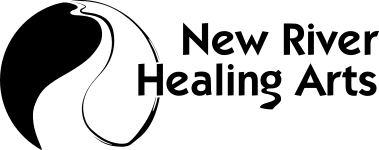How many sessions will be needed?
What are Tuina, Gua Sha, cupping, and moxibustion?
- What can acupuncture treat?
- Top
While many people are aware that acupuncture is helpful in reducing pain, they often are not aware that it does much more. To put Chinese medicine in perspective, realize that acupuncture and herbal medicine were primary care in ancient China and were used to treat infections, injuries, and chronic diseases.
In 2003 the World Health Organization (WHO) reviewed the scientific literature on acupuncture and found that acupuncture helped, or might help, a wide range of conditions. A few of these conditions include: allergic rhinitis, depression, dysmenorrhoea, headache, low and high blood pressure, pain (knee, low back, abdominal, sciatica, neuralgia), tennis elbow, fibromyalgia, polycystic ovary syndrome, rheumatoid arthritis, TMJ dysfunction, obesity, irritable bowel syndrome, and many others. A more complete list can be found here: "WHO Acupuncture Research." You can download the full report here: "Acupuncture: Review and Analysis of Reports on Controlled Clinical Trials."
Because acupuncture helps re-establish the body’s own healing mechanisms, most conditions will benefit from treatment, so even if your condition is not on the list, it might be helped by acupuncture.
- Is acupuncture painful?
- Top
No. For the most part acupuncture is not painful. Many patients find the experience very relaxing, and it is not uncommon for patients to fall asleep. The needles used are very thin; they are much smaller than the needles used to draw blood or inject medicines. Sometimes, needle insertion is scarcely felt at all. Other times, it is experienced as a short pricking sensation like an insect bite. It is not uncommon to experience additional sensations, which are interpreted as the arrival of Qi (pronounced "chee"). Sensations include dull ache, warmth, slight itching or tingling. If a needle causes discomfort beyond insertion, it is usually adjusted or removed.
- Are the needles sterile?
- Top
As required by the FDA, all needles used are sterile, pre-packaged, and labeled for one time use. Your needles are opened for your treatment, and used needles are disposed of in a "Sharps" container. Needles are never re-used.
- How does acupuncture work?
- Top
How acupuncture works depends on who you ask. The simplest answer is that it restores homeostatic mechanisms in the body. What that means is that it brings the body back into balance, so it can heal itself in the way it was designed.
- How many sessions will be needed?
- Top
The number of sessions needed varies, depending on the condition being treated and several other factors. Some conditions may improve completely in a single or several treatments. As a general rule chronic conditions will require more treatments. The longer one has had the condition, the longer it can take the body to rebuild and restore homeostasis. However, I am occasionally pleasantly surprised when a long-term chronic condition seemingly resolves in a single session.
- Is acupuncture just placebo?
- Top
Some people believe that acupuncture only works if you "believe in it," that the results are entirely placebo. First, all treatment modalities are at least partly placebo. There is a strong connection between body and mind; one could argue that they are in fact synonymous. It certainly helps to have a positive outlook and to have faith in the treatment one receives, but it certainly isn’t necessary. The idea that the affects of acupuncture are only placebo is discredited by animal studies. The animals are not aware that the acupuncture treatments are supposed to improve their condition, and yet there are positive outcomes from treatment.
Recently I saw a news story summarizing a large study, in which acupuncture was used to treat chronic low back pain. They found that "high pretreatment expectations" did not "predict improvement in back-related symptoms or function at eight or 52 weeks." Click to open the article in a new window: "High Acupuncture Expectations Not Linked to Outcomes."
- What is Qi?
- Top

One could probably write a book in answering that question. The character 气 literally translates to breath, gas, air, but in the West when talking about Chinese medicine, definitions like "life force" and "bio-energy" are not uncommon. In Chinese medical literature, Qi has different meanings in different contexts. Da Qi ("heavenly" or "cosmic" Qi) is the air, or something in the air, that we breathe. Ge Qi ("grain" Qi) is the food we eat. Ying Qi is a nutritive Qi that flows throughout our bodies. Wei Qi is a defensive Qi that also flows through the body.
Some people have suggested other ways of thinking about Qi. I have seen "function" put forward as an appropriate concept of Qi, and my teacher once offered "force" as a description of Qi. Wikipedia defines force as "any influence that causes a free body to undergo an acceleration," so if one is literal, Qi could be anything that acts on something else to cause movement. Since I can’t offer a definitive definition, you can choose whether you like the idea of Qi as a mystical life energy or prefer to think of it as air, food, energy, or the functional properties of the body.
- What are Tuina, Guasha, cupping, and moxibustion?
- Top
Tuina is a broad collection of hand techniques, joint rotations, tractions, and acupressure that utilizes much of the same theory as acupuncture.
Cupping is the application of cups adhered to the body with suction. It is used to release stagnation, as in some forms of chronic pain. Gua Sha is a technique, whereby lotion is applied to the skin, which is then rubbed vigorously with a blunt-edged object. It is sometimes used with acute conditions like the common cold, typically on the back.
Moxibustion is the application of heat energy to acupoints from burning the herb mugwort. In my practice I employ a moxa "cigar" that does not touch the body. It is very relaxing; some patients find it to be their favorite part of treatment.


